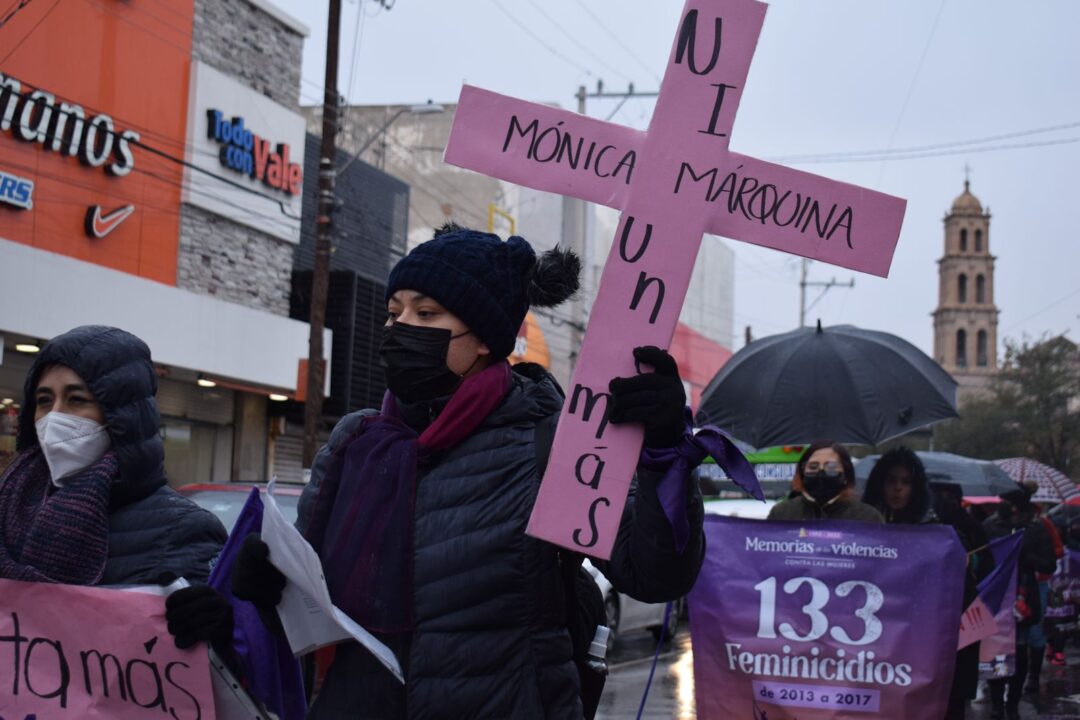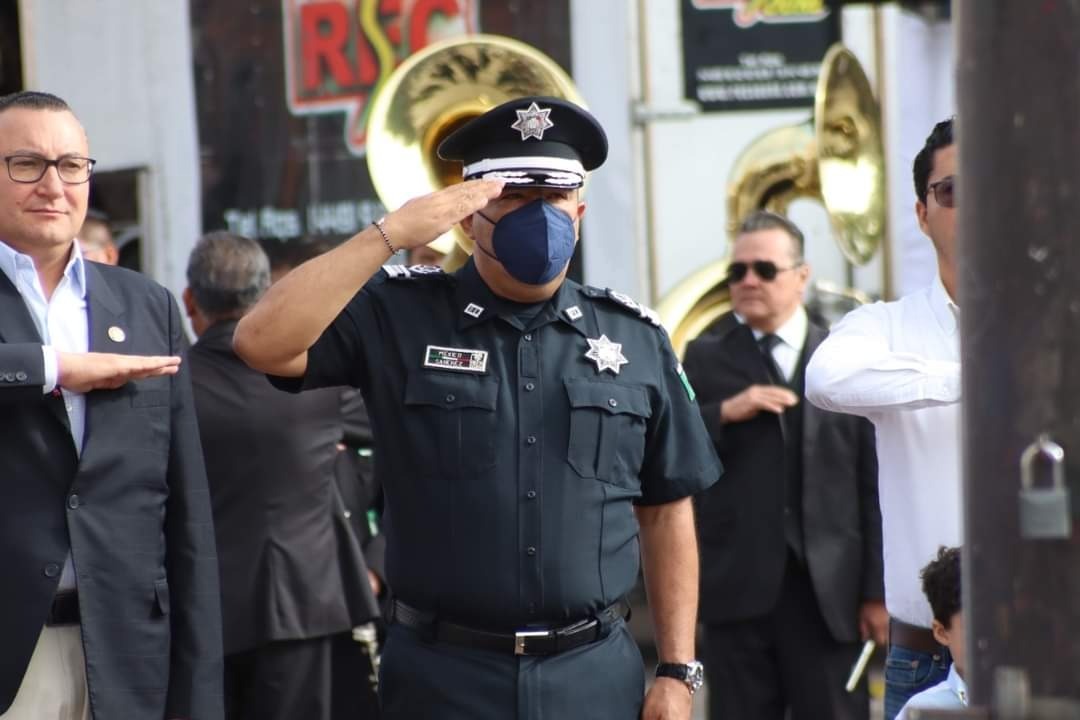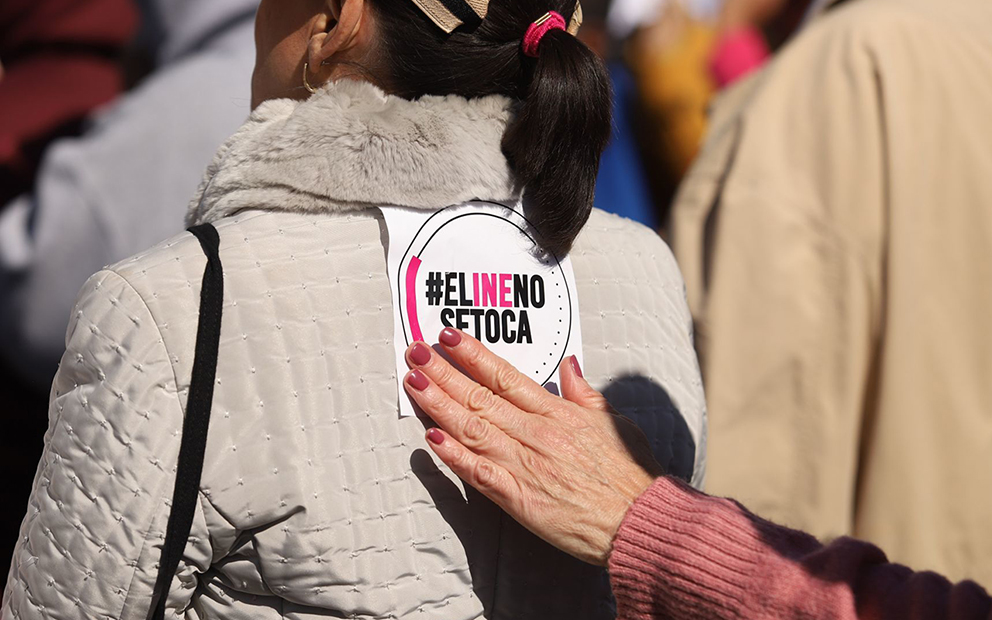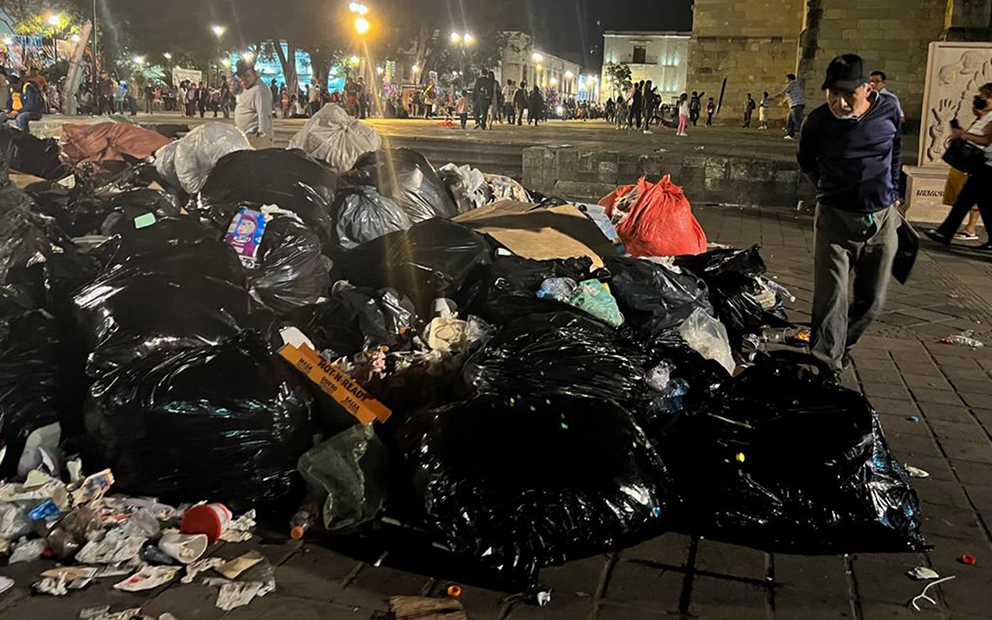The lack of a public care system to support older women in the last phase of their lives, combined with structural violence against those who spent a significant part of their time raising children and doing care work, leaves seven million senior women in a situation of potential vulnerability in Mexico. This is the story of how one group of women has woven, for more than 20 years, a network of care.
Text by: Daniela Rea, originally published November 28, 2021.
Photos by: María Ruiz.
Data analysis by: Georgina Jiménez.
Translation by: Dawn Marie Paley for Pie de Página in English.
MÉXICO CITY– One day in 1996, in the atrium of a church in the Pedregal de las Águilas neighborhood, in the southeast of Mexico City, a network of adult women was first woven. Today, 25 years later, this network continues to provide company and care for the women involved.
Lucila Rodríguez Mendoza, who everyone calls Lucy, was 56 years old when the parish priest of her church asked her to gather the older women who normally went to mass, to listen to them and understand their needs. She had been working at the parish visiting the ill for more than a decade, having arrived at prayer as a safe space from the violence she lived in her home. The parish priest thought it was a good idea to invite her to accompany the older women, so that they could distract themselves and know they are wanted.
And so Lucy did. She put a table and chairs in the atrium and invited the women. Two arrived at first, then 20, then 65 women. Together “like a little ball,” they told their stories.
One day, Lucy recalls now, at 81 years old, a city employee visited them and told them it was important to name their group, which was a few years old at that point. And, without any idea how long their connection would last, they shared various ideas. Lucy doesn’t remember them all now, but she recalls there was a near unanimous vote for the name of a hit song by Spanish singer Rocío Dúrcal in the mid-nineties: “Cómo han pasado los años [How the years have passed].”
The group was created to spend time together, to talk and to share in a process of catharsis. What was happening to one could easily be very close to what happened to others, as they listened to each other they put words to their feelings of vulnerability, or to a feeling that they are a weight or a burden for their families. This is a feeling that becomes more present as the years go on, and their minds and bodies have slowly deteriorated.
Isabel* was one of the first women to arrive to the group, when she was 62 years old. She says she was abused by her son. “Why don’t you die, fucking old lady, stop stealing our oxygen,” he would yell at her.
Lucy knew that collective care against violence would be something very important for the group. She took courses on human rights of seniors and started to support them. “I’ve told my compañeras that everyone, old or young, has something called rights and dignity, that’s what rights are for, so that those with more power respect them,” she said.
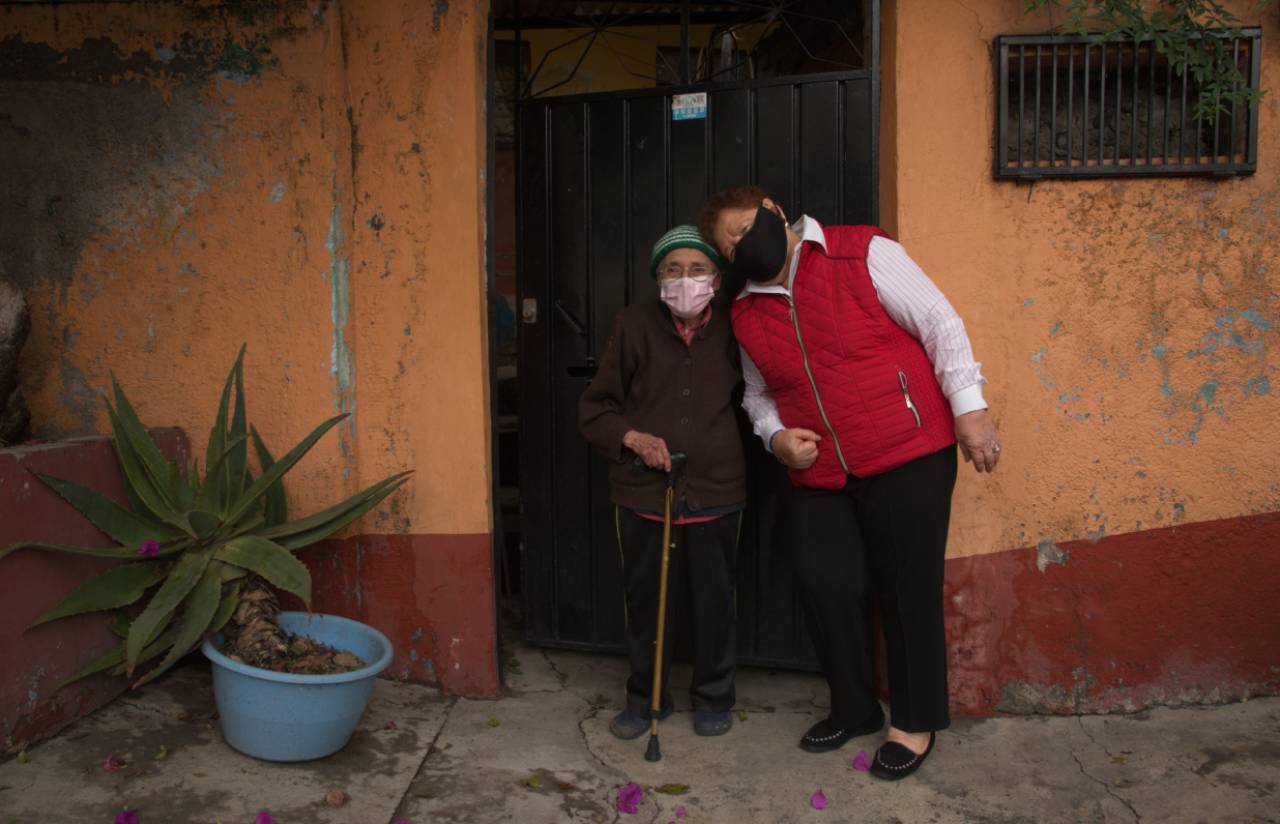
Lucy learned this after living with a man who was an alcoholic for 30 years. Punches, pushing, and insults were part of her everyday life. The man stopped drinking and Lucy forgave him. They are still together.
“Now I can identify violence and defend myself, and I teach the women to defend themselves. ‘I was a fool to let it happen, but you don’t have to, we are going to go to [a human rights organization] to make sure they take action.’ This is my story, it gave me experience, I learned that I am a brave person with a lot of dignity and I want all the older ladies to feel the same way,” says Lucy.
Carmelita* also arrived at the group. Her son fed her bread and coffee. Lucy took her to a senior’s home, where she stayed for two months, until “she died of sadness,” said Lucy.
In Mexico there are around seven million women over 60 years old. Many of them experience violence, especially in their homes, at the hands, paradoxically, of the people who are supposed to care for them, almost always by their children. These violences include theft and displacement, abandonment, abuse, humiliation, beatings and sexual abuse.
What does this violence and abuse tell us? In part, according to experts, it tells us about the lack of a public system of care that looks after women in the last phase of their lives, when they need a lot of help in their homes. And on the other hand, it is linked to structural violence that touches older women who –after having spent most of their lives in the home, working primarily to nurture, clean and care, or in precarious employment– do not have pensions, unlike men.
Data from the study “Aging and Pensions in Mexico” note that while 30 percent of senior men have pensions, only 11 percent of senior women do.
“There are inequalities that accumulate over the course of life and they are structured in peoples’ lives. It’s more likely that women lack economic security, because they worked at home or in informal jobs; it’s also more likely that they don’t know how to read as compared to men,” said Verónica Montes de Oca, coordinator of the Interdisciplinary Seminar on Aging and Elders at the National Autonomous University of Mexico.
The specialist explains that violence against elder women is “normalized” because of how previous generations learned to socialize, and for the self-perception of vulnerability among senior women. “This sensation makes you thank every day, every bit of bread, every tiny contribution and you over-appreciate it because you are in a vulnerable situation; this impacts women more than it does men,” she said.
According to the results of the 2016 National Study of Household Dynamics (Endireh), the most recent study of its kind, 66 percent of women in Mexico (over 15 years old) have suffered some kind of violence during their life: 49 percent emotional violence; 29 percent economic violence; 41.3 percent sexual violence, and 34 percent, physical violence. In the case of older women, 17.3 percent say they have experienced violence, 15 percent emotional violence, 6.3 percent economic violence, and 1.2 percent physical violence.
Studies into gender violence should be carried out with attention to age, according to Montes de Oca, otherwise any actions against it will become overly generalized.
For her part, Metzeri Martinez, the director of Attention to and Prevention of Violence in the Women’s Secretariate in Mexico City, says senior women suffer the most violences in the domestic space: invisibilization, attacks, theft and displacement, the refusal to allow them to work, and though she says it is rarely recorded, physical violence as well, like beatings, abandonment and negligence in care, as well as sexual violence, abuse, harrassment and rape.
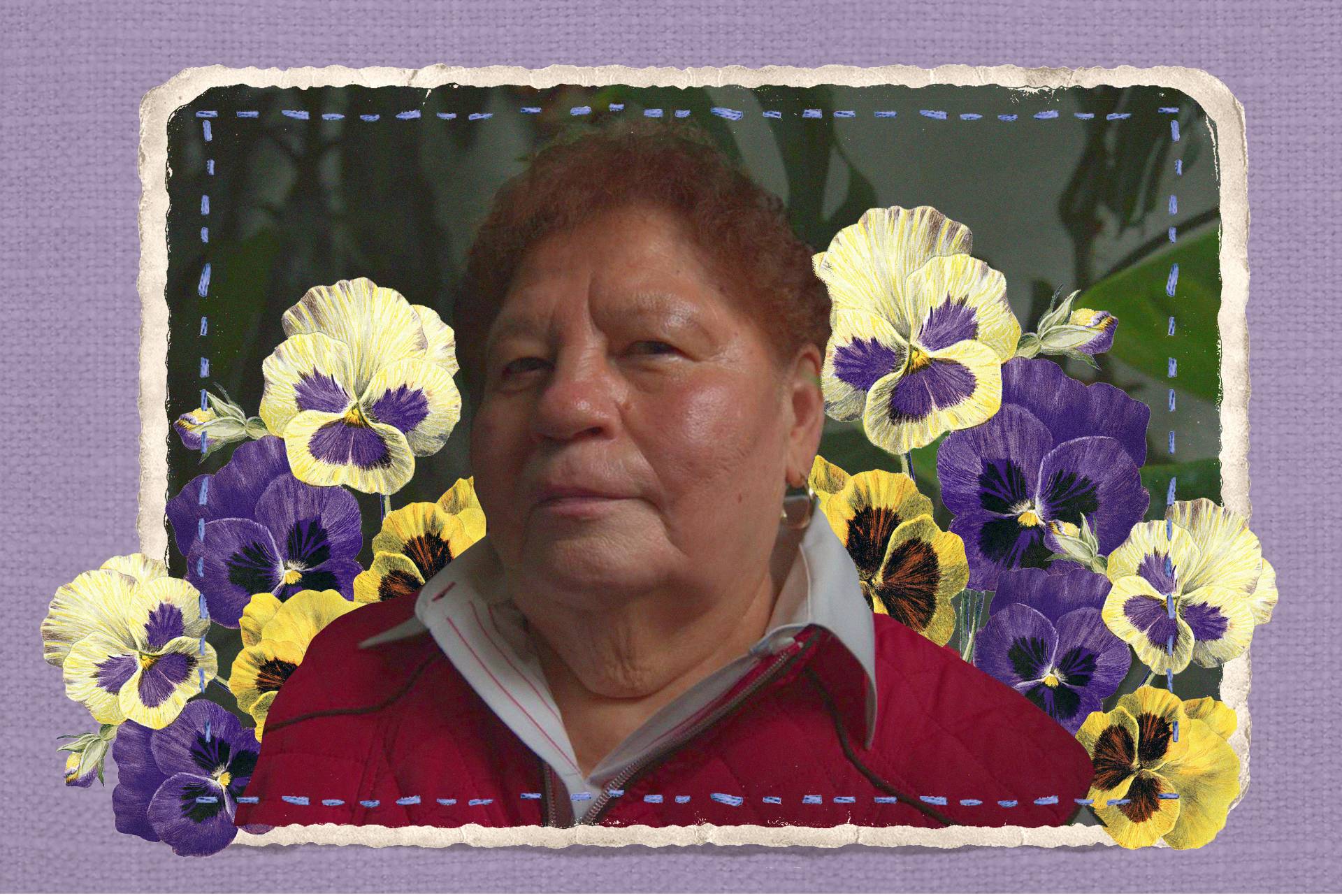
Lack of access to care
One summer morning in 2021, Doña Lucy stepped outside after more than a year and a half of being shut in because of the pandemic. She went to her friend Leovigilda Montiel’s house, they hadn’t met in a long while and she wanted to ask her about her health and wellbeing.
Lucy has been visiting Leovi since Leovi was kicked out of her home by her brother’s wife –who is also an older woman– when he passed away. At 90, Leovi spent a few days in the streets until a neighbor offered her a room in return for her care and company.
Doña Lucy arrived to Leovi’s house and the women greeted each other from a few meters apart, smiling behind their masks. They saw each other and knew they were well. With the pandemic, they came up with a new form of looking out for each other. “When they were about to shut us in, I said, ‘choose the person you get along with best and call each other by phone once a week, to see how the other is and what they need, if they’re not doing well, or if something has happened,’ that way we’ll be in touch, because if we don’t we won’t know who needs help,” said Lucy.
Before the pandemic, Leovi, like other women from the group Cómo han pasado los años, would visit her friends who were ill. She would bring them food and medicine, sometimes she would read from the bible and hold their hands. She would also talk to them about what’s happening outside.
“When we still could, we would go about our business and look after ourselves and we’d still be treated fine, but when we’re in bed and they have to clean up after us, they get angry, they hit us and call us ‘dirty pigs,’ they kick us out of the house, they push us around. I’ve seen all that, and it’s horrible,” said Leovi.
If not the women themselves, who would have helped Juanita* when her renter tried to kick her out? Who would have helped Rebeca* when her son neglected her and left her without food or medicine?
There are 40 social programs in Mexico designed to help the population with economic support and health, but none of them cover care work, according to a detailed study of social policies titled “What does and does not work in long term care for seniors?” published by the National Council for the Evaluation of Social Development Policies (Coneval). Care work is taken up at the level of the household, and only 0.4 percent of households pay for professionals to do elder care, according to the National Institute for Statistics and Geography (Inegi).
The tiny percent of the population that can pay for elder care is related to the high levels of poverty in Mexico. Four out of 10 people over 65 in Mexico live in poverty, and about half of them have a disability. In addition, four out of 10 seniors live alone and continue working.
To speak of violence against seniors is to speak of the absence of policies of care.
In her 2016 study “Multiple victimization in senior Mexican women,” Sonia M. Frías pays attention to the dependency of senior women on some members of their families, in many cases this becomes a social and economic burden for caregivers. And most of those who do this care work are other women, daughters, sisters, daughters-in-law, sisters-in-law who must make sacrifices with regards to their own personal and professional development. Which is to say, women caring for women without any help from the public policies.
The stress of the person doing the care work, the economic dependency of the woman being cared for, the social isolation, the lack of support networks, and the negative connotations of aging “justifies” certain actions against senior women, writes Frías.
In addition, for women with health problems or a disability, the levels of dependency rise and, according to the article “Senior women in Mexico City and their right to care,” which uses data from the 2016 Endireh study, this translates into more than twice as much violence against disabled elder women as compared to their non-disabled peers.
Informal household care work, according to the Coneval, can generate high physical and emotional costs for the person doing the care work as well as for those receiving it. The former don’t receive any payment or have proper working conditions, and this can cause negative impacts and a low quality of care for the latter.
Civil servant Matzeri Martínez recalls a case of a 95 year old woman who was neglected and did not receive care from her son, who was also a senior of 70 years old who needed his own care. Montes de Oca sums up the complexity of these situations: “there are families that are violent, yes, but that are also supportive. We can live both experiences at once. And it is between these contexts that we need to think about public policies of caring for older women.”
If the state doesn’t take care of care work, it is women who will step in and fill this absence, creating a circle of dependency-care-violence that exists and is maintained by the inefficiency of a system to attend to the needs of a population that is increasingly older: according to the Coneval, senior adults made up 10 percent of the population in 2018 and by 2050, will make up 21.5 percent.
Finally, last year, a little bit of light became visible at the end of the tunnel. It was in November of 2020, when the Chamber of Congress recognized the right to be cared for and approved the National Care System (SNC), an organization that will coordinate existing institutions to take on this project. But the path ahead is long.
The Center for Economic and Budget Research, in an analysis carried out for the launch of the SNC, found that spending destined to senior adults is 294 million pesos (US $14 million), which is equivalent to around 1.2 percent of all spending on care in Mexico. This budget has been reduced by nearly a quarter over the past four years.
Little by little, this issue is making it onto the agenda. In July of this year, UN Women, together with other institutions of the Mexican government like the National Womens’ Institute, launched the Global Alliance for Care and called on countries and strategic actors from around the world to take part in it.
The objective of the Alliance, it was explained, is to create and promote agreements with states and the private sector for the strengthening of and collaboration in care work, for the purpose of guaranteeing the recognition and the redistribution of care work among all of the responsible parties, as well as ensuring representation and remuneration for those who are providing care.
As someone who studies the lives of senior women, Verónica Montes de Oca says the spaces of encounter in public and private institutions are insufficient and fragmented. We need, she says, intergenerational and communalized policies.
We’re seeing networks of family care and not networks of community care… We have to open other networks and the key support network we need to strengthen is intergenerational sisterhood among women, with a perspective of solidarity among all, as part of public policies.
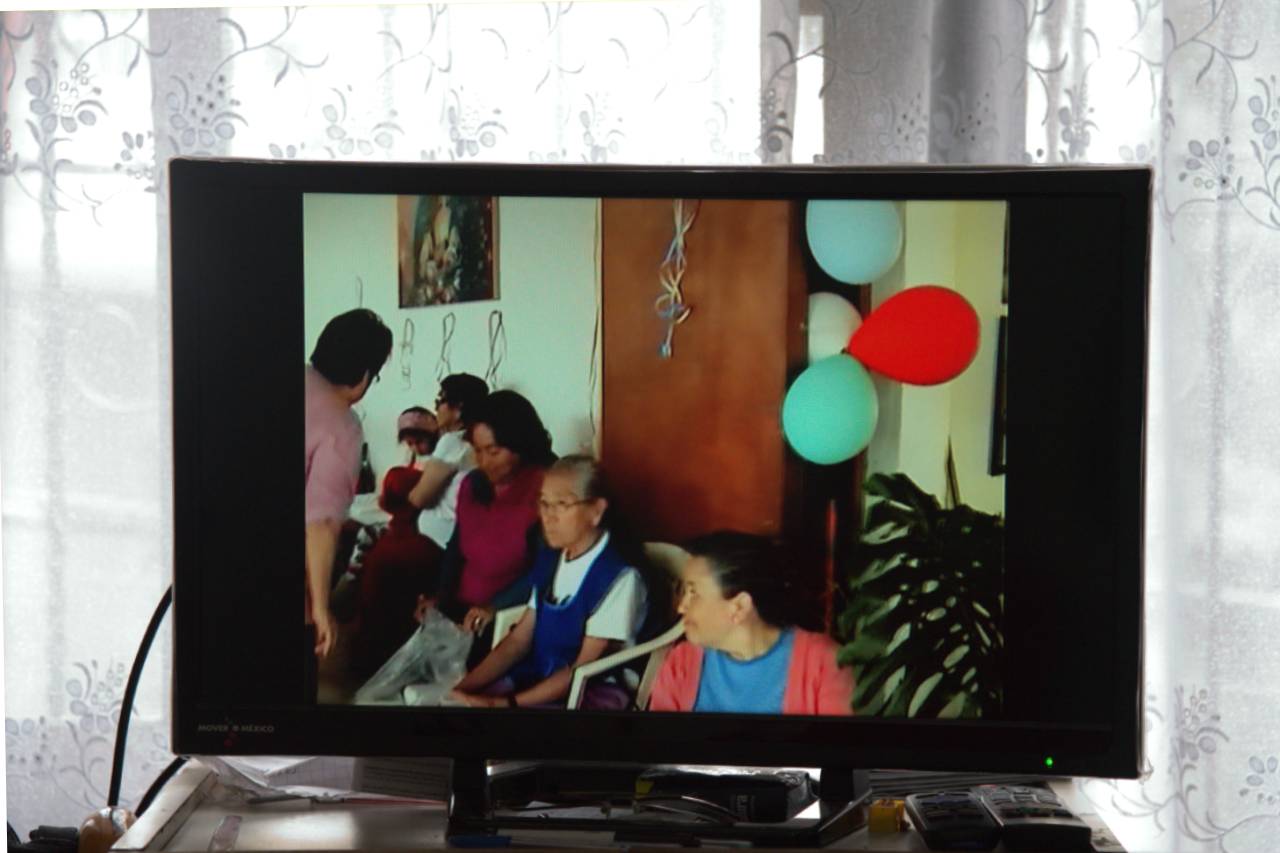
From the first victory to goodbye
Doña Lucy was born in Dolores Hidalgo, Guanajuato in a campesino family with 10 siblings. They were so poor that they sent her, at the age of 10, to live in a shelter run by nuns, who had her look after the elderly. “There was one who was 102 years old, doña Cayita, and I would sit there and I’d say ‘tell me your stories’ and she would tell me her stories and I would ask her if she had met the priest [Miguel] Hidalgo, and we would both laugh.”
Eventually, Lucy moved to Mexico City and started her own family. She was always close to religious spaces, so when the parish priest asked her to bring people together, she didn’t hesitate.
When Juanita, one of the compañeras from the group Cómo han pasado los años told her her renter had stopped paying rent and changed the locks, Lucy convinced her to act. “I told her that we should go to the National Women’s Institute and then to the police to make a complaint, and they removed the renter. That was our first victory.”
Little by little the group became more solid. Cáritas gave them workshops on the rights of adult women, on physical and mental energy, the neighborhood lent them vehicles for trips, the government of Mexico City helped them with legal support and sometimes even shelter for group members.
Lucy and her compañeras organized among themselves to visit those who could no longer get to the church, either because of physical problems, because they were neglected, or because their caretakers had closed them inside and refused to let them out. “We saw mistreatment, and we told the children to stop mistreating their elders, they listened to us on the condition that we didn’t involve the police,” said Lucy.
This network was created and is maintained because senior women need to be cared for and accompanied. One in every 10 people over 60 in Mexico live alone, but even when they live with their families they are neglected.
Doña Lucy grew old with her friends from Cómo han pasado los años. If her and her compañeras hadn’t needed to care for each other in the face of violence and neglect, they would still meet as a group to share recipes, dance danzón, or travel to beaches and towns in Mexico. Lucy would love to visit the beaches of Acapulco.
It starts to rain. Doña Lucy puts on a video of one of the parties the group would organize before the pandemic. Laughter, food, hair styled, mariachis, dance, enjoyment. Tears. She points out each of her compañeras that have died this year, and counts 10. She sees her friend “La güera” who started seeing Don Trini’s at these gatherings. In the video “La güera” puts on a cowboy hat and a shawl. She dances a folk song with her whole heart. Doña Lucy tells her husband that she’ll send the videos to her daughters, so that they remember her being happy.
*We didn’t include the last names of Isabel, Carmelita and Juanita in order to protect their identity. This story was the first of three reports in Spanish, and it was made possible in part by DW Akademie and promoted by the Federal Ministry of Foreign Affairs.
Daniela Rea is a reporter and author of the book Nadie les pidió perdón; and co-author of the book La Tropa: Why does a soldier kill? She directed the documentary No sucumbió la eternidad. She writes about the social impacts of violence and care work. She wanted to be a sailor.
María Fernanda Ruiz is always an outsider, audiovisual is her jam, and journalism is the path through which she understands and questions the world.
Click here to join Pie de Página’s bi-weekly English newsletter.
Ayúdanos a sostener un periodismo ético y responsable, que sirva para construir mejores sociedades. Patrocina una historia y forma parte de nuestra comunidad.
Dona


